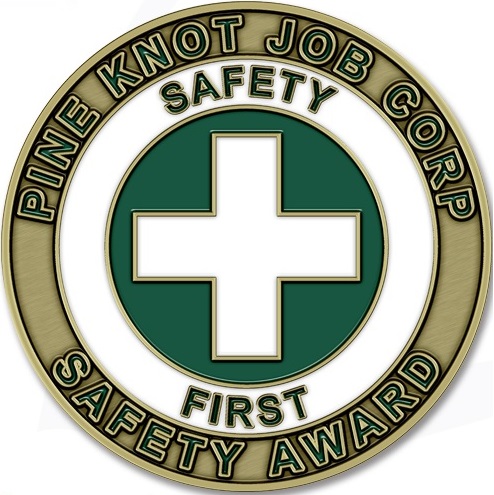Title Page
-
Center Name:
-
This report documents the safety inspection for a facility assigned to the following department:
-
The safety inspection of the PKJC Vocation facilities will be performed on a routine bases:
-
Inspected Facility:
-
Inspection Date:
-
Inspected By:
Overview
-
The Pine Knot Job Corps Conservation Center Facility Inspection aims to evaluate potential safety risks observed in center environments. Safety risks or hazards found are identified as deficiencies or Opportunities for Improvement. The deficiencies are sited based on OSHA standards, the Policy Requirements Handbook (PRH) or National consensus standards such as National Electric Code (NEC) or even best practices. Within this report, photos of the deficiency may be captured to aid in later identification and abatement.
A. General Safety
-
Trade clothing and safety equipment being worn
-
Safety board present with up to date info
-
Are the public and other trades adequately protected from dangers posed by the work?
-
Are first aid and BBP supplies available?
-
Ceilings free from holes or missing tiles?
-
Overhead lights protected from breakage?
-
Eye wash serviceable, inspected, not blocked, sign posted, tested weekly and signed off?
-
General housekeeping?
-
Outside area free of hazards?
-
Are walking/working surfaces free from tripping hazards, holes or cracks?
-
Compressed air nozzles dead head nozzles?
-
Compressed air hoses serviceable?
-
Safety Signs posted as needed?
B. Fire and Life Safety
-
Emergency Exit lights work?
-
Alarm pull stations good?
-
Smoke/Heat detectors good?
-
Are emergency exit paths and doors not blocked or locked? Doors open easy?
-
Are emergency exit routes posted?
C. Chemical Safety
-
Are SDS sheets readily available? Chemicals stored properly?
-
Are flammable liquids stored properly?
-
Are Fire Extinguishers readily available, accessible, inspected monthly and tag signed?
-
Are secondary containers labeled accordingly?
D. Personal Protective Equipment
-
Eye and Face protection worn as required?
-
Other welding PPE worn when required?
-
Hearing Protection worn as required?
-
High noise areas warning signs posted?
-
Personal Protective Equipment in good condition?
E. Tools
-
Power tools have guards in place?
-
Power tools either grounded or double insulated?
-
Power tool electrical cords and plugs in good condition?
-
Impact tools heads dressed to avoid mushrooming?
-
Broken tools taken out of service?
-
Are extension cords serviceable?
-
Machine Guards in place?
-
Machinery securely anchored to work surface to prevent tipping or walking?
-
Tool Accountability and Control Log Maintained?
F. Housekeeping
-
Walkways and work aisles clearly marked and kept clear?
-
Cords and hoses routed to prevent trip hazards?
-
Fabrication and work area clean, orderly and free of combustibles?
-
Trash, scrap, and debris picked up and disposed of?
-
Restrooms clean, toilet paper in hanger, soap, hand towels, hand dryer?
G. Welding and Cutting
-
Welding leads in good condition?
-
Welding rods removed when not in use?
-
Welding screens erected in high flash areas?
-
Welding blankets used as needed?
-
Gas cylinders stored upright, secured and valves closed when not in use?
-
Gas cylinders stored when not in use in storage room? Secured?
-
Caps secured and valves turned off on all cylinders not in use?
-
Fire extinguishers kept close to hot work areas?
-
Adequate Ventilation provided?
-
Welding booths free from combustibles and light curtains installed?
-
Fire watches posted as needed?
H. Electrical
-
Correct voltage used for application?
-
Extension cords rated for usage?
-
Electrical cords serviceable?
-
Lockouts used as needed?
-
Electrical panels not blocked (36") directory
-
Electrical knock outs and blanks installed where needed?
-
Electrical panel doors closed?
-
Electrical outlets checked including GFCI plugs?
I. Ladders
-
Have all employees been trained in ladder safety?
-
Are all ladders in good condition and used properly?
J. Miscellaneous
-
At a minimum are monthly safety inspection done?
-
JHA's available and signed?
-
Students trained in shop safety?
Proposed Corrective Actions
-
The issues identified within this report require prompt corrective action. It is understood that corrective actions may require coordination with another department, in which case the building custodian will submit a work order in School Dude to request the corrective actions.






